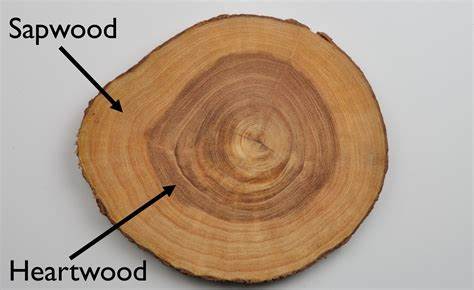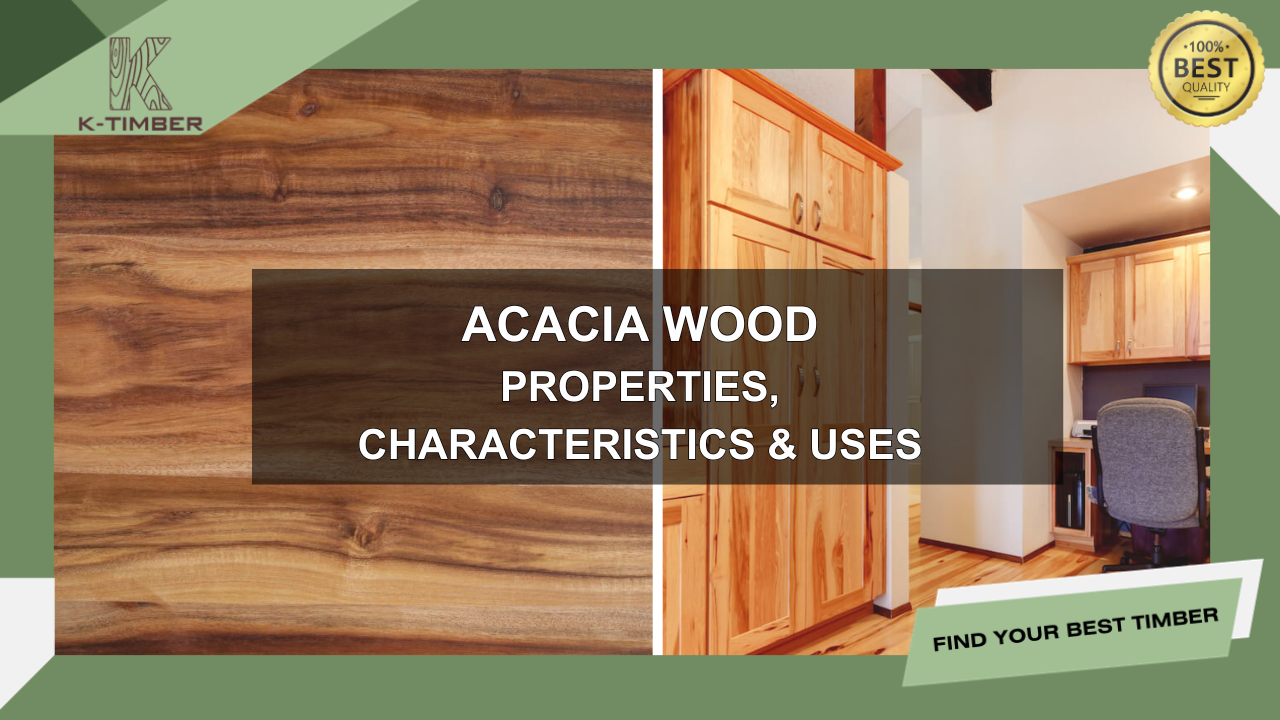Heartwood vs sapwood are the two areas in a cross section of a woody stem. While both types of wood perform a critical function in a tree, they hold significant differences. Heartwood, the inner, darker wood, provides structural support and resistance to decay, while sapwood, the lighter, outer layer, actively transports water and nutrients. This guide goes through the differences and unique qualities of these components to provide essentials for woodworkers and tree enthusiasts alike.

Table of Contents
What is Heartwood?
Heartwood is the innermost part of a tree trunk, often recognized by its darker color compared to the outer sapwood. It forms as the tree ages, with older sapwood cells transitioning into heartwood. This process involves the accumulation of natural compounds like resins and tannins, which give heartwood its rich color and increased resistance to decay and pests.

Formation Process
Heartwood develops from the center of the tree outward. As new sapwood forms, older sapwood cells die and transform into heartwood, filling with natural chemicals that protect the tree.
Role and Function in a Tree
While heartwood no longer transports water and nutrients, it plays a crucial role in providing structural support. Its dense, durable nature helps the tree withstand environmental stresses.
Common Uses and Applications
Heartwood is highly valued in woodworking and construction due to its strength and resistance to decay. It is commonly used for furniture, flooring, and other applications where durability is essential.
What is Sapwood?
Sapwood is the living, outer layer of a tree, located just beneath the bark. It is formed by the cambium layer, which produces new wood cells on the inside and bark cells on the outside. Sapwood is responsible for transporting water and nutrients from the roots to the leaves, acting as the tree’s circulatory system.

Formation Process
Sapwood forms as new layers of wood are added each year by the cambium. These layers can be thicker in good growing years and thinner in poor years. The cambium moves outward, making room for new wood inside.
Role and Function in a Tree
Sapwood plays a crucial role in the tree’s growth by moving water and nutrients throughout the tree. This helps in nourishing the tree and supporting its overall health.
Common Uses and Applications
While sapwood is not as durable as heartwood, it can be used in woodworking for pieces that do not require high strength or durability. It is often lighter in color and can be more flexible, making it suitable for specific applications. However, due to its higher moisture content and susceptibility to decay, it is generally less preferred for long-lasting wood products.
Similarities of Heartwood and Sapwood
Heartwood vs sapwood are integral parts of a tree, visible in its cross-section. Both types of wood contain secondary xylem, which is crucial for their formation. This formation occurs through the action of the vascular cambium, a layer of cells responsible for producing new wood and bark. Despite their differences, both heartwood and sapwood play vital roles in maintaining the tree’s life. They provide essential structural support, ensuring the tree can stand tall and withstand various environmental stresses.
Key Differences Between Heartwood vs Sapwood
While both types of wood play vital roles in the life and structure of a tree, they differ significantly in their properties and uses. Below is a detailed comparison highlighting the key characteristics of heartwood vs sapwood, helping you appreciate their unique attributes and practical implications.
| Characteristic | Heartwood | Sapwood |
| Color | Exhibits darker, mature hues, often rich and deep depending on the tree species | Typically lighter, showcasing youthful tones ranging from cream to light brown |
| Durability | Highly resistant to decay and insect attacks due to the presence of protective compounds like resins and tannins | More vulnerable to decay and insect damage because it lacks these protective compounds |
| Strength | Generally more robust and solid, providing significant structural support | Tends to be more flexible and less strong, making it less ideal for heavy-duty applications |
| Density | Denser, which offers better resistance to wear and tear, making it suitable for high-stress applications | Less dense, resulting in lower durability and higher susceptibility to damage under stress |
| Moisture Content | Has a lower moisture content since it no longer conducts water | Higher moisture content due to its role in water transportation |
| Composition | Contains a higher concentration of resins, tannins, and other compounds that enhance durability and color | Composed mostly of water, nutrients, and younger, living cells that are actively growing |
| Usage in Woodworking | Highly valued for its durability, rich color, and aesthetic appeal, making it ideal for furniture, flooring, and high-quality wood products | Less favored due to its susceptibility to decay and pests, but can be used for projects where flexibility and lighter weight are advantageous |
| Cost | Often more expensive due to its desirable properties and limited availability | Generally less expensive and more readily available, though less durable |
Final Thoughts
Understanding the differences between heartwood vs sapwood is crucial for woodworking and tree studies. Heartwood is darker, more durable, and stronger, making it ideal for high-quality projects. Sapwood, lighter and more flexible, serves specific purposes but is less preferred due to its susceptibility to decay and pests.
Are you looking for high-quality wood at a reasonable price? Contact K-Timber. With over 20 years of experience and exports to over 30 countries, we provide the best materials for your projects. Choose K-TIMBER for all your wood needs.









![[K-Timber] Blog Post Boder](https://k-timbers.com/wp-content/uploads/2024/07/K-Timber-Blog-Post-Boder-3.png)
